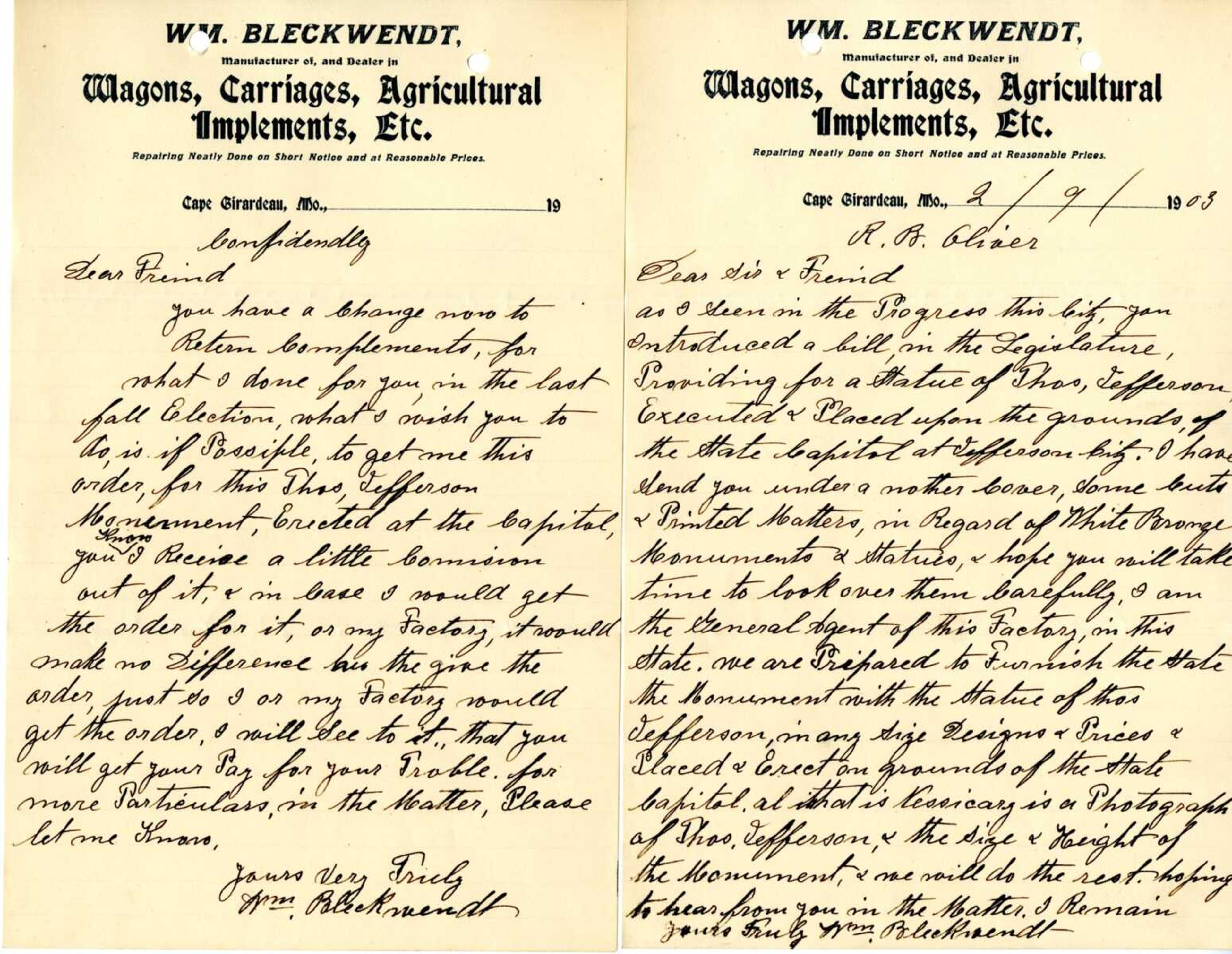Representative R.B. Oliver Sr.
The 1902 election for the Missouri House of Representatives for Cape Girardeau County pitted Robert Burett Oliver (Democrat) against John D. Porterfield (Republican), George C. Thilenius (Independent Republican) and Thomas H. Jenkins (Progressive). Oliver won with a 633-vote advantage over Porterfield: 2,149 to 1,486. ...
The 1902 election for the Missouri House of Representatives for Cape Girardeau County pitted Robert Burett Oliver (Democrat) against John D. Porterfield (Republican), George C. Thilenius (Independent Republican) and Thomas H. Jenkins (Progressive). Oliver won with a 633-vote advantage over Porterfield: 2,149 to 1,486. According to the 1903 House of Representatives Journal, Oliver was sworn in by the Chief Justice of the Supreme Court on Jan. 7, 1903. The first bill he introduced was House Bill 161 which called for the appropriation of money for construction of a new building at the State Normal School, Third District in Cape Girardeau. The previous building was destroyed by fire on April 7, 1902. His efforts proved successful, because the state appropriated $200,000 to build the current Academic Hall. The architect was Jerome B. Legg with construction by Regenhardt Construction Company. The building was dedicated in 1905. Along with Carnahan Hall and the Art Building, these are the oldest buildings currently on the campus of Southeast Missouri State University.
On Jan. 19, he introduced House Bill 249 which was intended to appointment a commission to erect and provide funds for a statue of Thomas Jefferson on the grounds of the capital in Jefferson City. It should be noted this statue was to be placed on the grounds of the second state capital that stood in Jefferson City prior to the destruction of the building by fire in 1911. The announcement of the introduction of the statue bill was published in the Cape Girardeau Progress shortly after and was seen by Cape Girardeau manufacturer William Bleckwendt. In February 1903, he wrote two letters to Oliver requesting his company be given the contract for the construction of the bust because he had helped Oliver get elected. I have been unable to find any letters stating Oliver responded to him. The monument to Jefferson apparently never materialized during this legislative session.
William Bleckwendt was born in Hanover, Germany, in 1846. As a child, he immigrated to the United States in 1859 with his uncle, August. They settled in rural Cape Girardeau County with other German farm families. As an adult, he learned the blacksmith trade and owned his own shop for years on Broadway. He married Augusta Caroline Geldmacher in 1872. They had seven children; four reached adulthood. His wife died in March 1903 at the Fulton State Hospital, and he never remarried. He lived most of his life with one of his daughters, prior to his death on Jan. 10, 1925. He is buried in Fairmount Cemetery in Cape Girardeau.
After the capital burned and the current capital was dedicated in 1917, a statue of Thomas Jefferson was included on the south lawn of the capital, where it still stands. It was installed in 1926 and designed by James Earle Fraser.
Connect with the Southeast Missourian Newsroom:
For corrections to this story or other insights for the editor, click here. To submit a letter to the editor, click here. To learn about the Southeast Missourian’s AI Policy, click here.











